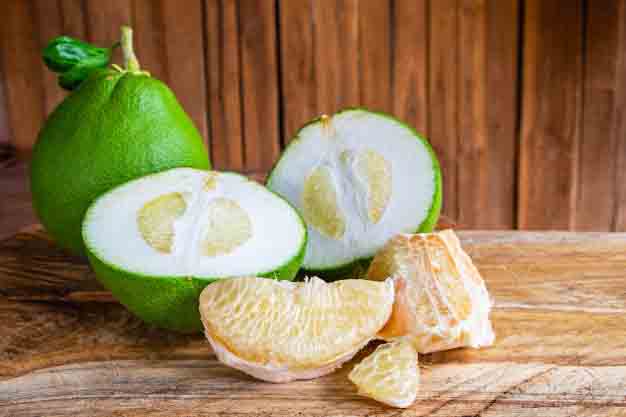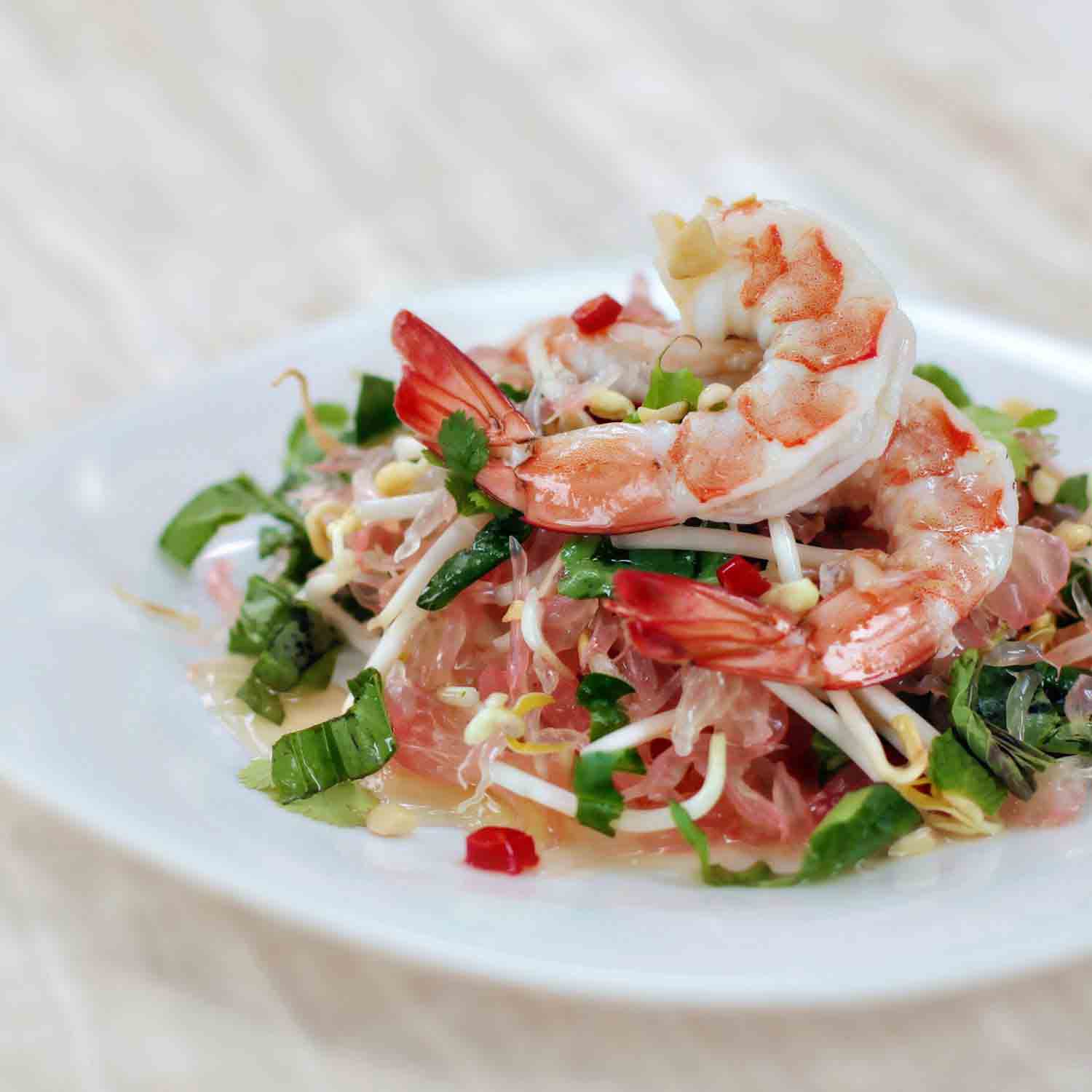Pomelo Profile
Written by Joy
Nov 06 2020

Pomelo is a plant of the Rutaceae, citrus genus, and a tree. The tender branches, leaf backs, pedicels, calyx, and ovary of the pomelo are all pilose, the tender leaves are usually dark purple-red, and the tender branches are flat and ribbed. The leaves are thick, dark green in color, broadly oval or elliptical, and the Lianji leaves are 9-16 cm long and 4-8 cm wide. Racemes, sometimes with single axillary flowers; flower buds are light purple-red, sparsely milky white; the calyx is irregularly 5-3 lobed. The petals of pomelo are 1.5-2 cm long; there are 25-35 stamens, and sometimes some stamens are sterile. The fruit is round, oblate, pear-shaped or broad-cone-shaped, with thick or thin skin, spongy, large oil cells, convex, solid but softcore, sacs 10-15 or as many as 19 petals; many seeds There are more than 200 grains, there are also seedless, irregular shapes, usually approximately rectangular, single embryo. The flowering period of pomelo is from April to May, and the fruit period is from September to December.

Pomelo morphological characteristics
The racemes of pomelo sometimes have single axillary flowers. The flower buds of pomelo are light purple-red and milky white; the calyx is irregularly 5-3 lobed; the petals are 1.5-2 cm long; the stamens are 25-35, and some of the stamens are sometimes sterile; the styles of pomelo are thick and long, and the stigma is slightly larger than the ovary. The fruit is round, oblate, pear-shaped or broad-cone-shaped, with a transverse diameter of more than 10 cm, light yellow or yellow-green, hybrids have vermilion, thick or thin skin, spongy, large oil cells, and convex, The fruit core is solid but soft, the sac is 10-15 or as many as 19 petals, the juice sacs are white, pink or bright red, and rarely creamy. There are more than 200 seeds of pomelo, and some are seedless. They are irregular in shape. They are usually almost rectangular. The upper part is thin and often truncated, and the lower part is full. Most of them are underdeveloped, with obvious longitudinal ribs and milky white cotyledons. Single embryo.Pomelo growth habit and growing environment and distribution

Pomelo is native to Southeast Asia and has been cultivated in China for more than 3000 years. It is planted in Zhejiang, Jiangxi, Guangdong, Guangxi, Taiwan, Fujian, Hunan, Hubei, Sichuan, Guizhou, Yunnan and other provinces. All parts of China south of the Yangtze River, the northernmost area is found in Xinyang and Nanyang, Henan Province, all cultivated. There are plants in Southeast Asian countries.
Pomelo efficacy and role
The economic value of pomelo

The nutritional value of pomelo
The pomelo is as big as a pot, sweet and juicy. The weight of a single fruit is generally 1.25-2 kg, and the maximum can reach 3.5 kg; the peel is orange-yellow and fragrant. The pulp of pomelo is tender and juicy. The edible part of the fruit is 45-65%, the amount of fruit juice is 53%, the total sugar content in the pulp is 7.4-12%, the acid content is 1.1-1.4%, and the soluble solid content is 10-12.5%, per 100 grams. The edible part contains 34.8-45 mg of vitamin C and contains vitamin B1, B2, β-carotene, other vitamins and various minerals. Because pomelo has high sugar content, moderately sweet and sour, rich nutrition, and durable storage, it is called natural canned food. The pulp of pomelo contains high vitamin C. Pomelo has the effects of digestion and anti-alcohol.Pomelo cultivation

Latest Updated
- Benefits of Bugleweed - 7 Science-backed Health Benefits
- Bugleweed Dangers & Side Effects - Is It Poisonous?
- How to Plant Evergreen Trees - What You Should Know
- When to Plant Evergreens - Grow Guide for Evergreen Trees
- 12 Wonderful Evergreen Shrubs for Your Garden
- 12 Popular Evergreen Plants with Pictures for Beginners
- When And How To Prune A Lilac Bush Like a Pro
- How to Grow & Care for Lilac Vine (Hardenbergia Violacea)
- Japanese Lilac Tree (Syringa Reticulata) Care & Propagation Guide
- Shumard Oak Pros and Cons - What to Know
Popular Articles
- Winter maintenance of Antirrhinum Majus
- How to Grow Terminalia Mantaly Tree
- How to Grow and Care for Crossostephium Chinense
- How to grow Antirrhinum Majus in spring
- Peristeria Elata (Dove Orchid) Profile: Info & Care Guide
- Underwatered Snake Plant (Sansevieria Trifasciata) - Signs And How To Fix
- How to Care for Brazilian Jasmine Plant (Mandevilla Sanderi)
- How to Grow & Care for Graptopetalum Purple Delight in Summer
- Rosa Chinensis (China Rose): Plant Growing & Care Tips
- How to Care for Baby Sun Rose (Aptenia Cordifolia)